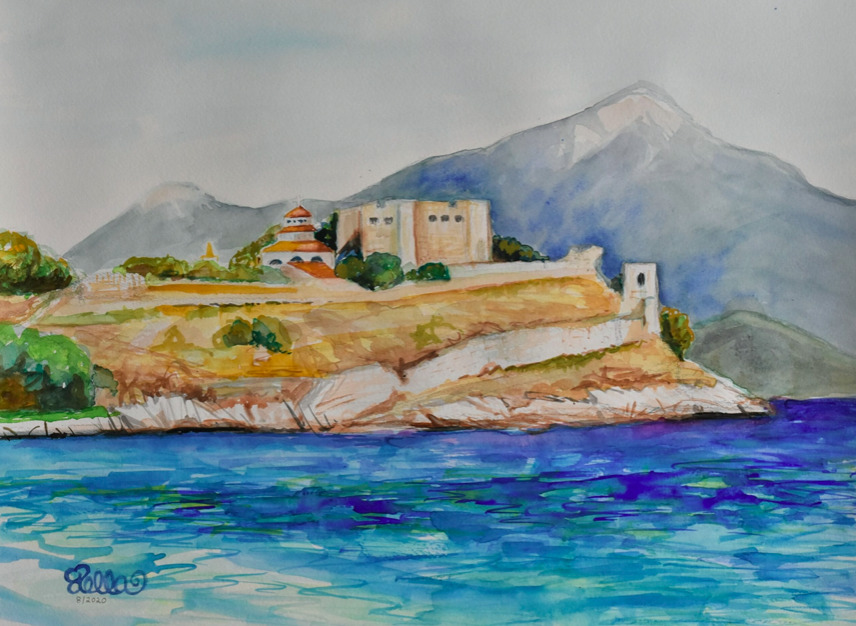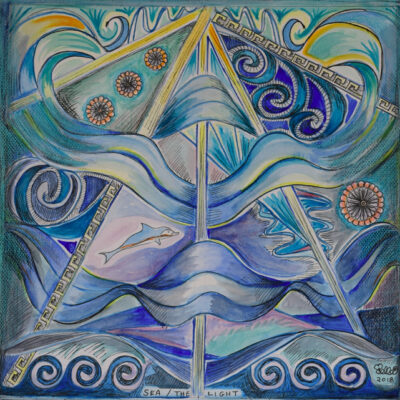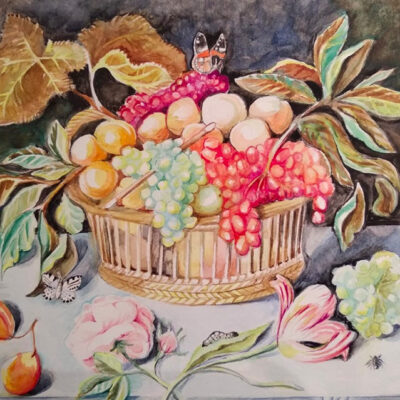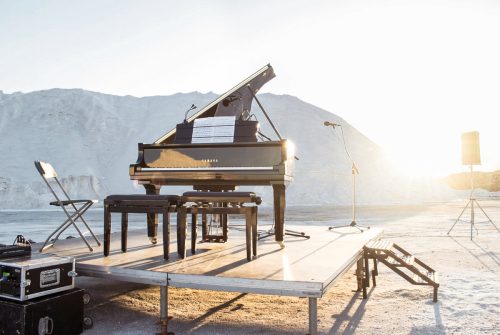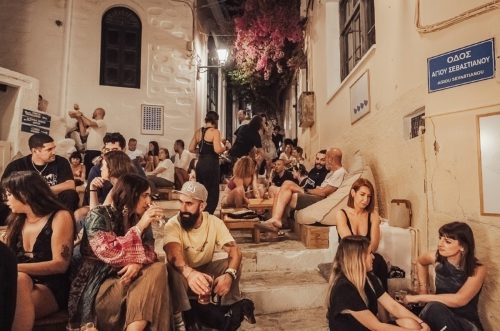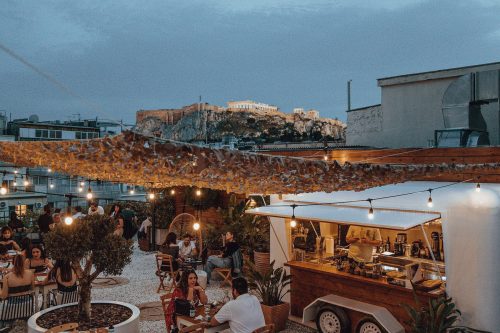Greek landscapes, seascapes and nature as well as the geometric and abstract ideas they inspire are some of the artist’s greatest passions.
Interview By Alexia Amvrazi
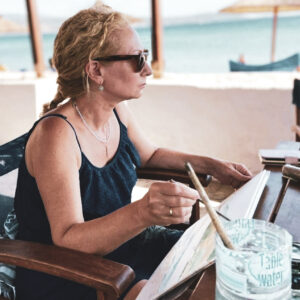
Although Stella Sevastopoulos started her studies at art school, she spent most of her adult life so far following a more theoretical route professionally, exploring art as a journalist and art critic. She painted since her youth and continued to do so as a parallel activity that she preferred to keep mostly private. “But certain life events make you rethink things,” she says, “So, I finally gathered the courage to show my work and dedicate myself to the exploration of my own artistic path.” This only started to happen in earnest two years ago, and almost immediately, Stella’s art received very enthusiastic reviews and she has built quite a following. “The interest my art has earned is a real honour for me. I’ve participated in various group shows with intriguing concepts and had one solo show. Better late than never as they say!” Here I delve into her themes and visions, interested in unravelling the ideas behind her colourful and evocative images.
How would you define your art?
A difficult question, because at the moment I’m employing different styles and mediums to create different kinds of paintings. Mainly landscapes (inspired by various movements), but also abstract geometric works that incorporate design elements. Plus, mixed media works that employ lino prints (my ‘Mermaids’ series). What unites them all, is inspiration from nature – a return to nature via art. Symbolism and colour also play important roles.
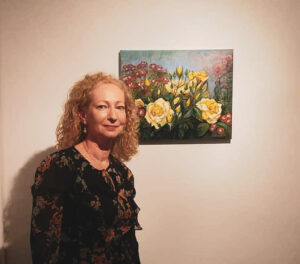
You use multi-faceted styles, always combined by how evocative and colourful they are, and how much ambiance or feeling they create. but how do you veer from nature subjects to Geometrics for example? What sets your intent?
Instinct: When I see nature that inspires me, I’ll focus on nature. But I also get the urge to do some more ‘introspective’, symbolic work. Then I’ll explore a more abstract approach, which allows you to work with the ‘language’ of art more freely, and to investigate your inner reality: emotions and thoughts. Many of these abstract works however have also been inspired by nature. How the sun’s rays travel into the sea for example. The figurative inspires the abstract and vice versa.
Does each of your artworks express a philosophy, feeling or vision for you?
Maybe I’m trying to replicate the ways of nature: I want the viewer to be able to find some kind of calmness, equilibrium, but also mystery and energy there. A place they can visit, in order to get away from the strife of everyday life. There are some darker undercurrents too. However, when I paint ‘en plein air’, especially on Samos, the feeling is so exhilarating that I can’t help but focus on the beauty of it all: that sublime natural order, which is so precise yet also leaves room for chaos, chance and difference.
What is it about the various themes you most focus on that expresses you?
I’m a nature-lover and a romantic. I suppose in this age of the Anthropocene, someone has to point the other way: towards trying to find our harmony with nature again.
Are you working on any exhibition for the near future?
I’m looking forward to the upcoming ceremony that will celebrate the works from the exhibition ‘The Fight Between Birds and Gods – Swarm Intelligence’, that will be added to the permanent collection of the Royal Theatre in Thessaloniki (my work ‘Nightingale and Human’ is among them).
My work ‘Purple Tints at Dusk’ just got included in a virtual gallery (The Papillon Gallery), directed by English art dealer Steve Burnage. This work depicts the mountain of Mycale, as seen from Psilli Ammos beach on Samos. The mountain, once Greek, overlooks the Mycale Strait (about 1.6m wide). The Turks have named it Dilek. This location is symbolic: here the continent of Europe ends, and the continent of Asia begins. West becomes East. A place of transformation. That’s why I’ve depicted it at dusk, when the mountain turns purple. Nature’s magic. Mycale is also where battles have been fought (eg in 479BC, during the Greco-Persian War). It is also a crossing for refugees, migratory birds such as flamingos. Even a wild cat made it across and became the inspiration for Alki Zei’s book ‘Wildcat Under Glass’.
Finally, how would you describe the art scene in Athens right now?
Vibrant, active and constantly developing. But neither the state nor the general public really support it. So, the private sector has stepped up to the challenge. But despite the crisis and the pandemic, Athens is gaining force as an international art capital with a wide spectrum: from the ancient to the cutting-edge!
Find out more about Stella Sevastopoulos’ art at the following links:
Stella Sevastopoulos’ website here
The Papillon Gallery here

